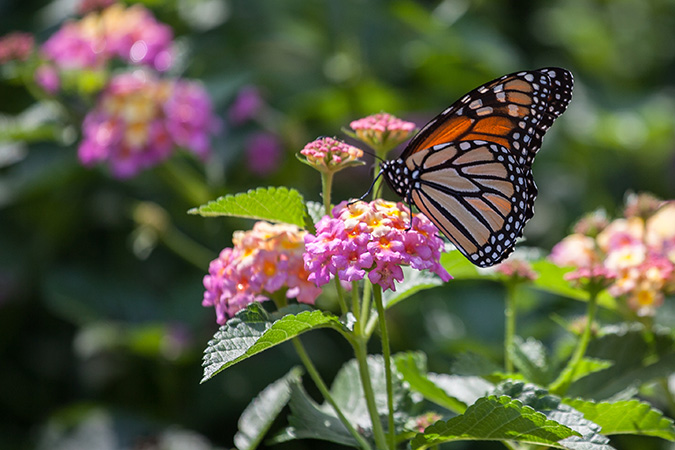An ecologically-based approach to managing pests with an emphasis on using multiple management strategies. The principles of IPM can be applied to any pest of food production systems, landscapes, and urban environments. IPM considers multiple control tactics with the aim of minimizing selection pressure on one given tactic.
-
Cultural Control
Cultural control involves the use of farm management strategies and resistant plant varieties to minimize the impact of certain pests. Examples include rotating corn production with other crops to prevent corn rootworm from completing its life cycle, using landscape varieties resistant to disease, or sanitation to prevent household pest pressure.
-
Biological Control
Biological control focuses on protecting beneficial species in the field as well as introducing beneficial species in some cases to reduce densities of target pests. Examples include reducing broad-spectrum pesticide use to promote populations of beneficial predators in the field or landscapes or introducing lady beetles to greenhouses to control aphid populations.
-
Mechanical Control
Mechanical control is any physical measure taken to trap pest species, exclude them from the area, or eliminate them. Examples include using a grease band on fruit trees to prevent wingless female moths from laying eggs on developing trees in spring, using trap crops to exclude pests from cultivated fields, or discing weeds to eliminate them.
-
Behavioral Control
Behavioral control often involves the use of chemicals but does not involve directly killing the pest species. It is the alteration of pest behavior such as mating, aggregation, or host identification via the use of pheromones and semiochemicals. Pheromones are intraspecific chemical cues used by insects, and semiochemicals are more broadly defined as chemicals that convey signals from one organism to another. Both can be synthetically produced and used to alter the behavior of pest species. An example includes introducing mating disruption pheromones to reduce populations of pest species in the field.
-
Chemical Control
Chemical control is typically a last resort in integrated management systems but can still be used in the context of IPM. The goal of chemical control is to use products that specifically target a pest (as/when possible) while also reducing the number of sprays by using periodic sampling and action thresholds. An example includes using pesticides that specifically target lepidopteran pests (i.e., spinosad, B.t.) with minimal impact on natural enemies.

The focus of IPM is on prevention, avoidance, monitoring, and suppression of pests. Chemical pesticides are used only where and when the above measures fail to keep pests below damaging levels. All interventions are need-based and are applied in ways that minimize economic, health, and environmental risks. The IPM approach may be viewed as a continuum of increasing levels of intervention. In the initial stages, an IPM program may involve a few strategies such as pest scouting and the use of pesticide action thresholds. As the practitioner gains knowledge and experience, the IPM program evolves towards a more biointensive system where the emphasis is on preventive measures to limit pest pressure and enhance biological controls.
The above information and additional information can be found in the following publication, Integrated Pest Management: Concepts and Strategies

